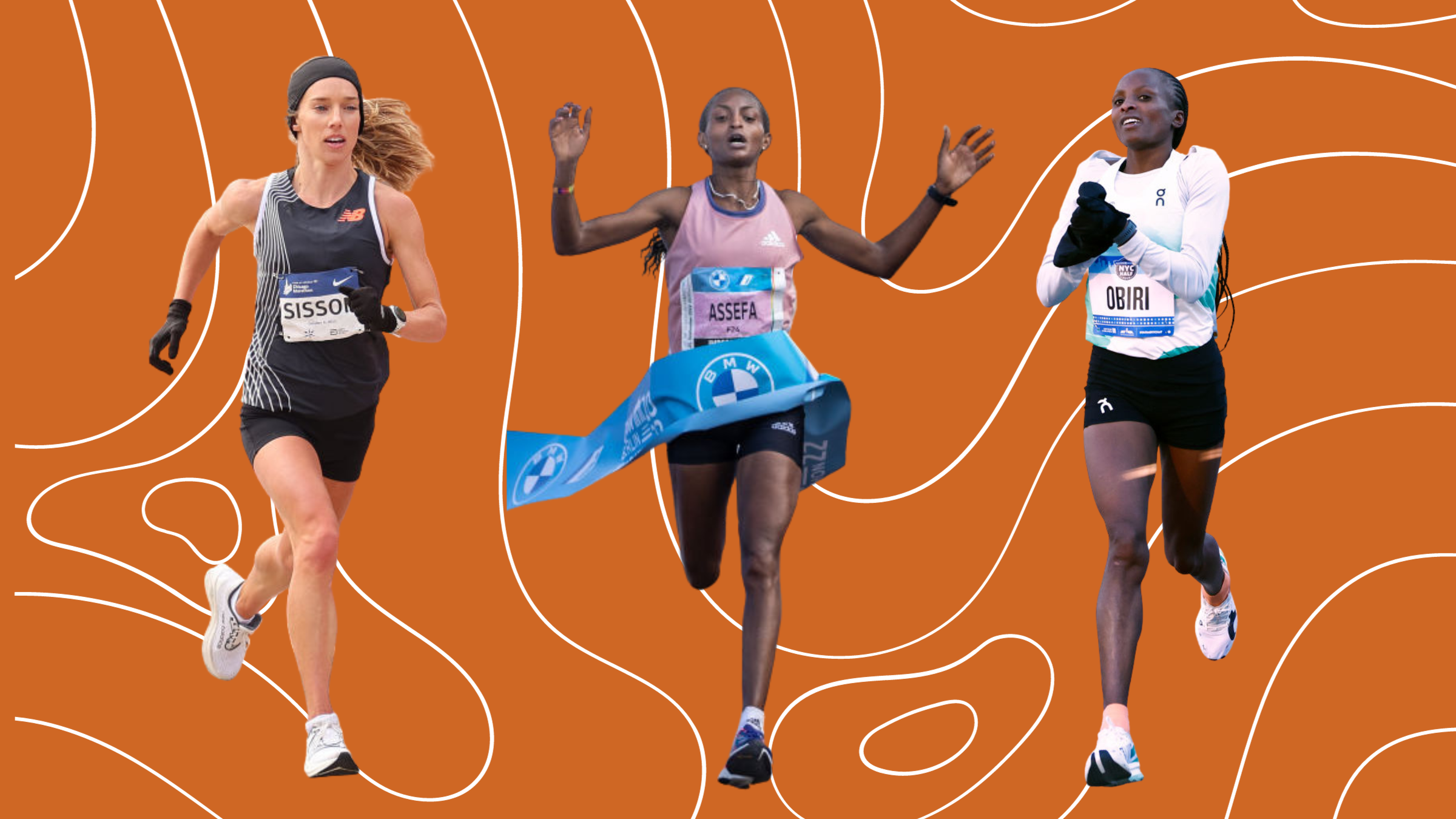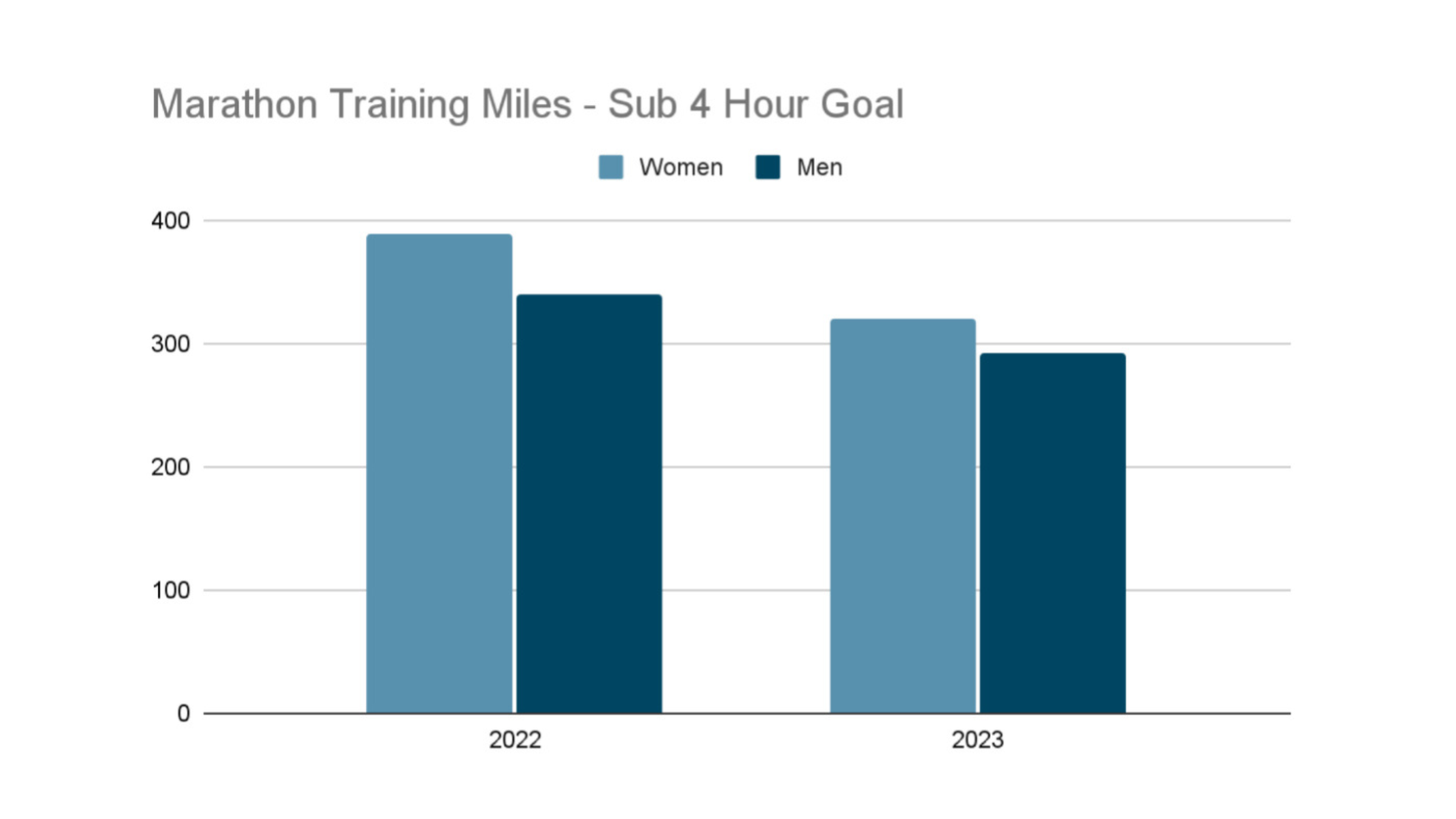Strava Data Confirms Women Are Smarter Racers

(Photo: Getty)
Earlier this month, on Sunday, November 5, more than 50,000 runners set out to complete the New York City Marathon. Race spots for the World Marathon Major are highly coveted, with 128,000 runners vying for a chance to toe the line in 2023.
The point-to-point course takes runners through the five boroughs and is known to be challenging, from the logistics of getting to the start line in Staten Island to its steep hills and bridges. In 2023, the average finish time was 4:39:46.
Of the 51,402 finishers, 55 percent were men, 44 percent women, and less than a percent identified as non-binary. Data released from Strava, the physical activity tracker, revealed how runners trained for and raced the notoriously tricky course and, more specifically, identified why women may be more successful in reaching their race goals than men.
How Women Marathoners Trained
Many elements can factor into how a runner fares on race day (weather, psychological state, energy levels, nutrition, etc.), but nothing makes a bigger difference than the quality of the training leading up to it.
According to Strava’s data, for runners aiming for a four-hour finish, women logged 21 percent more miles across a 16-week training cycle. Women aiming for a sub-four-hour finish also trained more than their male counterparts.


Those additional miles could have come from the dedication to squeezing in training where they can. Women were 20 percent more likely to start weekday runs before 7 am.
How Women Marathoners Race
After years of stagnation post-pandemic, more women are racing marathons in 2023, with an 18 percent increase from 2022. Not only are more women racing, but they are making incredible strides (as has definitely been seen in professional racing among the likes of Tigist Assefa, Emily Sisson, Courtney Dauwalter, or 2023 Boston and New York City champion Hellen Obiri).
Past studies have shown that men are more likely to exhibit riskier pacing strategies and are therefore more likely to hit the wall (a point in the race where you run out of energy) later on in a race. Data from Strava confirmed that women are more likely to hit a negative split in their races – keeping enough in the tank to run the second half faster than the first. That was true not only at this year’s New York City Marathon, but also at the Boston Marathon, the 2022 California International Marathon, and last year’s New York City Marathon, even with its brutal weather conditions.
Strava said women were more likely to hit their goal in all pace groups. For runners targeting a finish under three hours, women were 33 percent more likely to meet their goal and 12 percent more likely to meet their goal under four hours.
Of course, plenty of runners don’t finish in their race time, especially on a tough course like the New York City Marathon. But even when missing their goal, women fared slightly better than men, finishing an average 8.2 percent slower than their goal time compared to 8.7 percent for men.
With such high statistical levels of success, it makes one wonder what success looks like for the next generation of female runners. If data tells us anything, we can expect new records and loftier goals on the horizon.